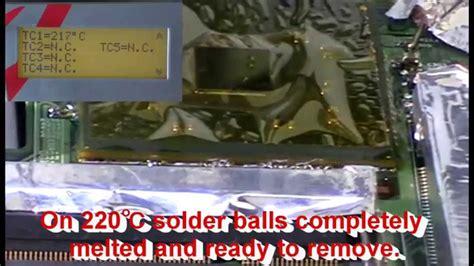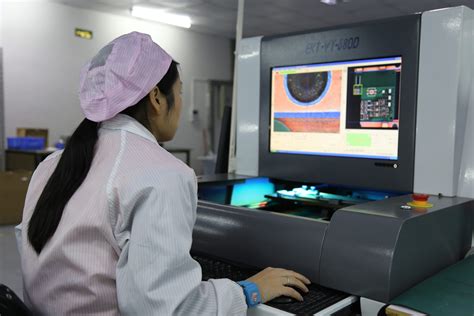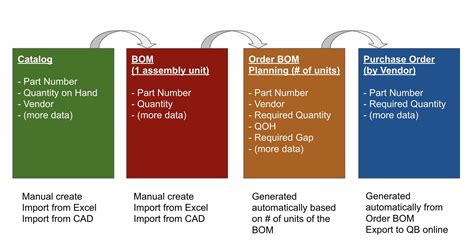
ALL ABOUT FLEX PCB
-
Isola Adds PCB Certification
Posted by
–
 Read more: Isola Adds PCB Certification
Read more: Isola Adds PCB CertificationLeading Laminate Manufacturer Expands Offerings with Printed Circuit Board Certification Isola, a global leader in the manufacture of high-performance laminate materials for printed circuit boards (PCBs), has recently announced the addition of PCB certification services to its portfolio. This strategic move positions Isola as a one-stop solution provider for the […]
-
How to remove the IC block from the PCB
Posted by
–
 Read more: How to remove the IC block from the PCB
Read more: How to remove the IC block from the PCBIntroduction to IC block removal Integrated Circuit (IC) blocks are essential components of Printed Circuit Boards (PCBs) that perform various functions in electronic devices. However, there may be instances when you need to remove an IC block from a PCB, such as for replacement, repair, or upgrades. This article will […]
-
Grounding of the Printed Circuit Boards
Posted by
–
 Read more: Grounding of the Printed Circuit Boards
Read more: Grounding of the Printed Circuit BoardsIntroduction to PCB Grounding Printed Circuit Boards (PCBs) are the backbone of modern electronics, providing a platform for interconnecting electronic components and enabling the functioning of complex circuits. One critical aspect of PCB design is proper grounding, which ensures the stability, performance, and reliability of the electronic system. In this […]
-
RoHS Influence PCB Industry
Posted by
–
 Read more: RoHS Influence PCB Industry
Read more: RoHS Influence PCB IndustryUnderstanding RoHS and Its Requirements RoHS is a directive that originated in the European Union (EU) and has since been adopted by many countries worldwide. The directive restricts the use of six hazardous substances in electrical and electronic equipment: Lead (Pb) Mercury (Hg) Cadmium (Cd) Hexavalent Chromium (Cr6+) Polybrominated Biphenyls […]
-
Flexible PCB Capabilities
Posted by
–
 Read more: Flexible PCB Capabilities
Read more: Flexible PCB CapabilitiesIntroduction to Flexible PCBs Flexible printed circuit boards (FlexPCBs) have revolutionized the electronics industry with their unique ability to bend, fold, and twist without compromising electrical performance. Unlike traditional rigid PCBs, FlexPCBs offer a versatile solution for applications that require compact packaging, lightweight design, and high reliability in dynamic environments. […]
-
 Read more: Steps In PCB Fabrication Process PCB Manufacturing technique
Read more: Steps In PCB Fabrication Process PCB Manufacturing techniqueIntroduction to PCB Fabrication Printed Circuit Board (PCB) fabrication is a multi-step process that involves creating a functional circuit board from a design layout. The PCB fabrication process has evolved over the years with advancements in technology, materials, and manufacturing techniques. In this article, we will explore the various steps […]
-
 Read more: Complete Guide of BOM Electronic Components Purchase
Read more: Complete Guide of BOM Electronic Components PurchaseIntroduction to BOM Components Purchase When it comes to manufacturing electronic products, the
-
 Read more: Electrostatic Spraying Technology Used in Thick-Copper PCB
Read more: Electrostatic Spraying Technology Used in Thick-Copper PCBIntroduction to Electrostatic Copper-Spraying in PCB Manufacturing Electrostatic copper-spraying is a cutting-edge technology that has revolutionized the manufacturing process of thick-copper printed circuit boards (PCBs). This innovative method has gained popularity in recent years due to its ability to produce high-quality, reliable, and cost-effective PCBs with enhanced electrical and thermal […]
-
 Read more: Ultimate Guide to EMC PCB Design and EMC Standards
Read more: Ultimate Guide to EMC PCB Design and EMC StandardsIntroduction to EMC PCB Design Electromagnetic Compatibility (EMC) is a critical aspect of Printed Circuit Board (PCB) design that ensures electronic devices function properly in their intended electromagnetic environment without causing or being susceptible to electromagnetic interference. EMC PCB Design involves implementing various techniques and adhering to EMC standards to […]
-
 Read more: What Do You Need to Know About Turnkey PCB Assembly and EMS?
Read more: What Do You Need to Know About Turnkey PCB Assembly and EMS?Introduction to Turnkey PCB Assembly Turnkey PCB (printed circuit board) assembly refers to the complete end-to-end process of fabricating PCBs from design through final assembly by a single vendor. In a turnkey PCB Assembly service, the provider handles every step including: PCB design review and optimization Prototyping Component sourcing and […]




